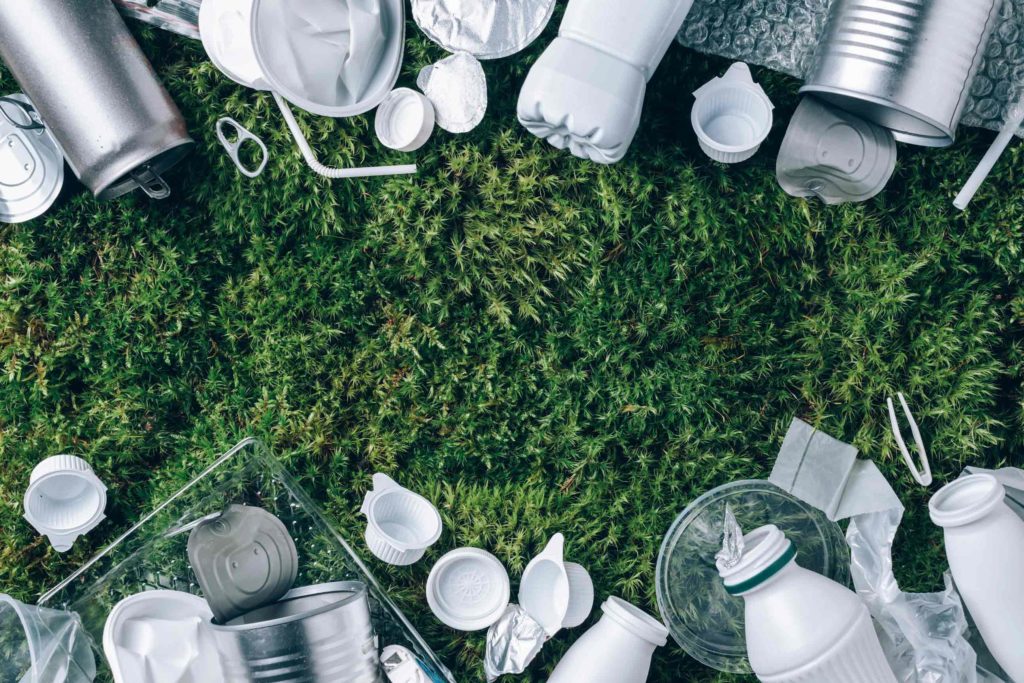There are many challenges facing recycling programs in the US today. In 2018, recycling rates (including composting) stood at 32.1 percent across the nation, down from a previous high of 34.7 percent in 2015. This drop, alongside rising levels of almost all types of waste, means that more trash is going to landfill than ever before—despite increasing awareness and willingness from businesses and citizens to recycle.
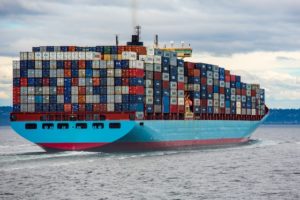
Among the many reasons for this drop was the dramatic withdrawal of China as an importer of recyclables. As part of its National Sword policy imposed in January 2018, China all but banned the import of waste, sending shockwaves through the US recycling industry and cutting off a waste outlet that had been in operation for almost 25 years.
China didn’t stop importing recyclables entirely, however, it raised the bar for purity to 99.5 percent, a figure that was essentially impossible for exporters to meet using existing recycling infrastructure. Ultimately, it ended its support for increasingly non-selective single-stream recycling programs that bundled all types of recyclables together, with little care to its contamination or value.
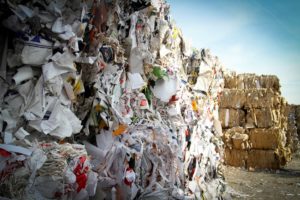
Previously, low purity and contamination standards, low labor costs, and high demand for recyclables made it profitable to export all kinds of waste to China, with up to 70 percent of global plastics shipped to Chinese processors. However, this low bar for acceptance was suddenly and comprehensively removed, and with it, the effectiveness of single-stream recycling systems.
Despite this setback, there are still occasions when single-stream programs can work. In fact, as with any system, there are pros and cons to its operation that are worth exploring when building national recycling programs that serve the largest number of people. Here, we look at both the advantages and disadvantages of single-stream and why balancing convenience and quality is key to efficient recycling programs that divert more waste away from landfill.
What is single-stream recycling?
Single-stream recycling is simply a single bin/cart or collection of all recyclables that requires zero sorting from consumers and businesses. All materials are hauled in the same truck and then sorted when they arrive at the materials recovery facility (MRF).
In addition to single-stream recycling, you may also be aware of dual-stream recycling which remains popular in various states and cities. This is most often a separation of plastics, glass, and metals from paper and card, with haulers collecting the different materials in separate trucks.
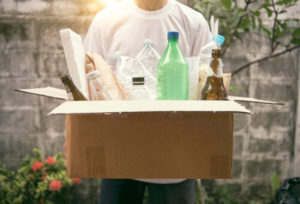 In both cases, the types of materials that are most commonly accepted include:
In both cases, the types of materials that are most commonly accepted include:
- Plastic bottles and other plastic packaging (Typically those with a 1 and 2 in the three arrow symbol)
- Paper and cardboard
- Magazines, catalogs, and newspaper
- Cans and clean aluminum foil
- Clean jars and glass containers
Today, while dual-stream recycling is generally considered to be more efficient, particularly when it comes to the reduction of contamination levels, single-stream recycling is still used more widely across the US.
Single stream recycling pros and cons
The pros and cons of single-stream recycling are relatively straightforward, however, municipalities who previously introduced single-stream programs when exporting low-quality materials to China was possible, may now find that they are less practical than before.
Pros
- Encourages consumers to recycle through reduced responsibility without the need to separate materials
- Garbage collection frequencies, costs, and emissions can be reduced with a “single” collection
- Lower upfront costs for collection allows easy entry for municipalities looking to start recycling programs
- Technology allows for automated sorting of materials reducing the need for manual sorting
-
Cons
- Often leads to aspirational recycling where materials that cannot be recycled are added to single-stream bins
- Lower quality of mixed materials means contaminated waste goes to landfill—particularly broken glass and paper
- Higher costs within sorting and processing facilities may lead to low recycling rates or material export with little transparency as to final processing
- Materials do not always separate efficiently leading to low-quality recycled material. Additionally, manual monitoring and sorting remains necessary
How effective is single-stream recycling?
In general, thanks to the reduced effort involved, consumers tend to prefer single-stream programs over other systems. Ease of recycling at home or on business premises is a key driver in increasing recycling rates, however, it also causes problems for municipalities and processing facilities that must be dealt with further down the line. The challenge for municipalities is to balance convenience and efficiency while maintaining a high-quality end product (a product with minimal contamination).

For example, aspirational recycling is a big issue within single stream, with consumers “recycling” all types of packaging that, in fact, cannot be processed. Education can help in this respect, but with new products hitting the market every day, it’s clear that this issue will continue until we see a change in the way products are packaged.
Another issue facing municipalities and processing facilities is tied to urban density and the geographic demands of any given part of the US. Single stream recycling may be the cheapest and most viable way to begin the long road towards zero waste in certain places, even if only a percentage of the materials collected are eventually recycled.
For example, in densely populated areas dual/multi-material stream recycling may make more sense, as shorter routes and large amounts of recyclables make multiple collections viable. In sparsely populated areas the opposite may be true, with fewer collections on long routes increasing the costs to send out haulers on a daily basis. Either way, these questions can only be answered through detailed analysis and experiments tailored to town, city, or state requirements.
Does single stream work? Technology may have the answer.
Regardless of whether municipalities operate legacy single-stream programs implemented before National Sword, or they are currently exploring early iterations of single-stream to kickstart sustainable waste management initiatives, there is advancing technology that it can support efficiency.
Currently, single-stream sorting facilities use dedicated machines to separate materials that are then either processed on-site or sent to other facilities. After delivery to the MRF, sorting usually looks something like this:
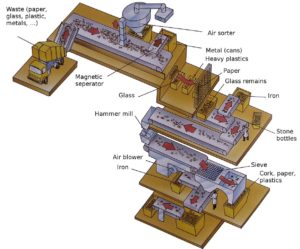
Source: Wikipedia
>
- All materials are unloaded onto a conveyor and non-recyclables are removed by hand.
- Moving down the conveyor, materials reach a triple-deck screen where heavier containers drop to the bottom level and lighter items head to the second level.
- Glass containers are broken automatically using a screen.
- The materials that remain are passed under a powerful magnet to remove tin and steel. Eddy currents are then used to remove aluminum.
- MRF workers separate cardboard, newsprint, and office paper, and drop each piece into a container below. Once all the material is separated, it’s baled and shipped to recycling companies for processing.
Though the system relies heavily on automation, manual removal of contaminated and non-recyclable materials and general maintenance of these complex machines means there remains significant human intervention in order to maintain purity levels.

The good news is, with a renewed emphasis on the importance of recycling, recent technological advances within robotics and AI is seen as the next generation – or referred to as Smart MRF. Theoretically, a plethora of new, highly accurate sensors alongside algorithmic learning will not only make the removal of contaminated materials more accurate but also ensure that patterns of waste and potential contamination can be identified by increasingly sophisticated software, pushing single-stream processing to new levels of purity.
The collection of single-stream materials is also benefiting from digital solutions. For businesses, in particular, recurring and on-demand collections of single-stream recyclables, alongside insightful diversion metrics ensure that recyclable materials are delivered to the correct facilities.
In each of these cases, RTS is available to organize, advise, and educate businesses on how to manage single, dual, and multi-material recycling, allowing them to reach and exceed sustainability goals and solve waste management challenges. For more information on our services, contact our TRUE advisors today. Additionally, subscribe to the RTS blog for more insights into recycling and sustainability.

